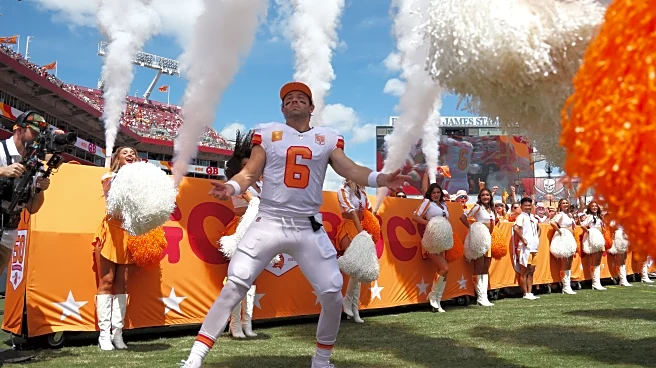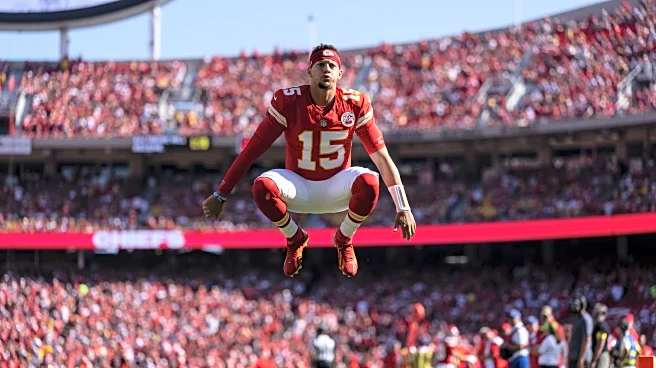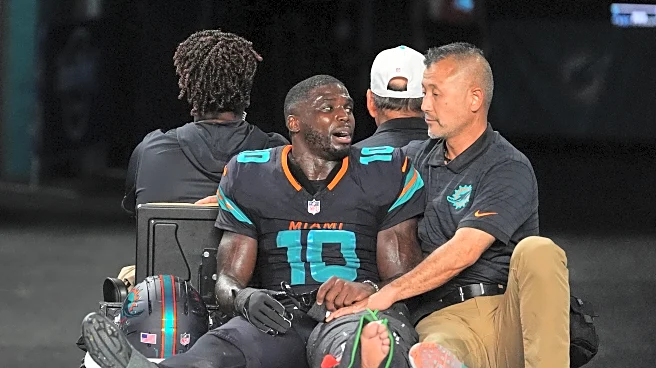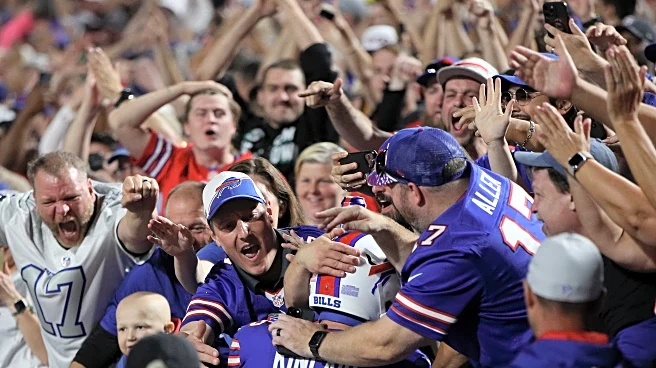What's Happening?
The Miami Dolphins are reportedly planning to release wide receiver Tyreek Hill before the next league year begins in March 2026. Hill suffered a dislocated left knee and multiple torn ligaments during a game against the New York Jets, which will keep him out for the remainder of the season. Despite having one year left on his three-season, $90 million contract, the Dolphins may opt to save $36 million on the salary cap by designating him as a post-June 1 cut, although this would result in $15.9 million in dead money. Hill's agent, Drew Rosenhaus, expressed a desire to negotiate with the Dolphins to continue Hill's career in Miami.
Why It's Important?
The potential release of Tyreek Hill could have significant implications for both the player and the Miami Dolphins. Hill has been a key performer for the team since his trade from the Kansas City Chiefs in 2022, contributing impressive statistics over the past seasons. His departure would leave a gap in the Dolphins' offensive lineup, potentially affecting their performance in future games. Financially, the move could provide the Dolphins with substantial salary cap relief, allowing them to invest in other areas of the team. However, it also raises questions about Hill's future in the NFL, given his recent injury and the impact on his playing capabilities.
What's Next?
The Dolphins will need to make a decision regarding Hill's contract and future with the team. If released, Hill will become a free agent, and his recovery from injury will be crucial in determining his prospects with other teams. The Dolphins may explore options to fill the void left by Hill, either through trades or the draft. Meanwhile, Hill's agent plans to engage in discussions with the Dolphins to find a mutually beneficial arrangement, which could influence the team's decision-making process.
Beyond the Headlines
Hill's situation highlights the challenges athletes face with injuries and contract negotiations. The ethical considerations of releasing a player due to injury, despite their past contributions, may spark discussions within the sports community. Additionally, the financial dynamics of NFL contracts and salary cap management are underscored by this development, illustrating the complex decisions teams must make to balance performance and fiscal responsibility.












